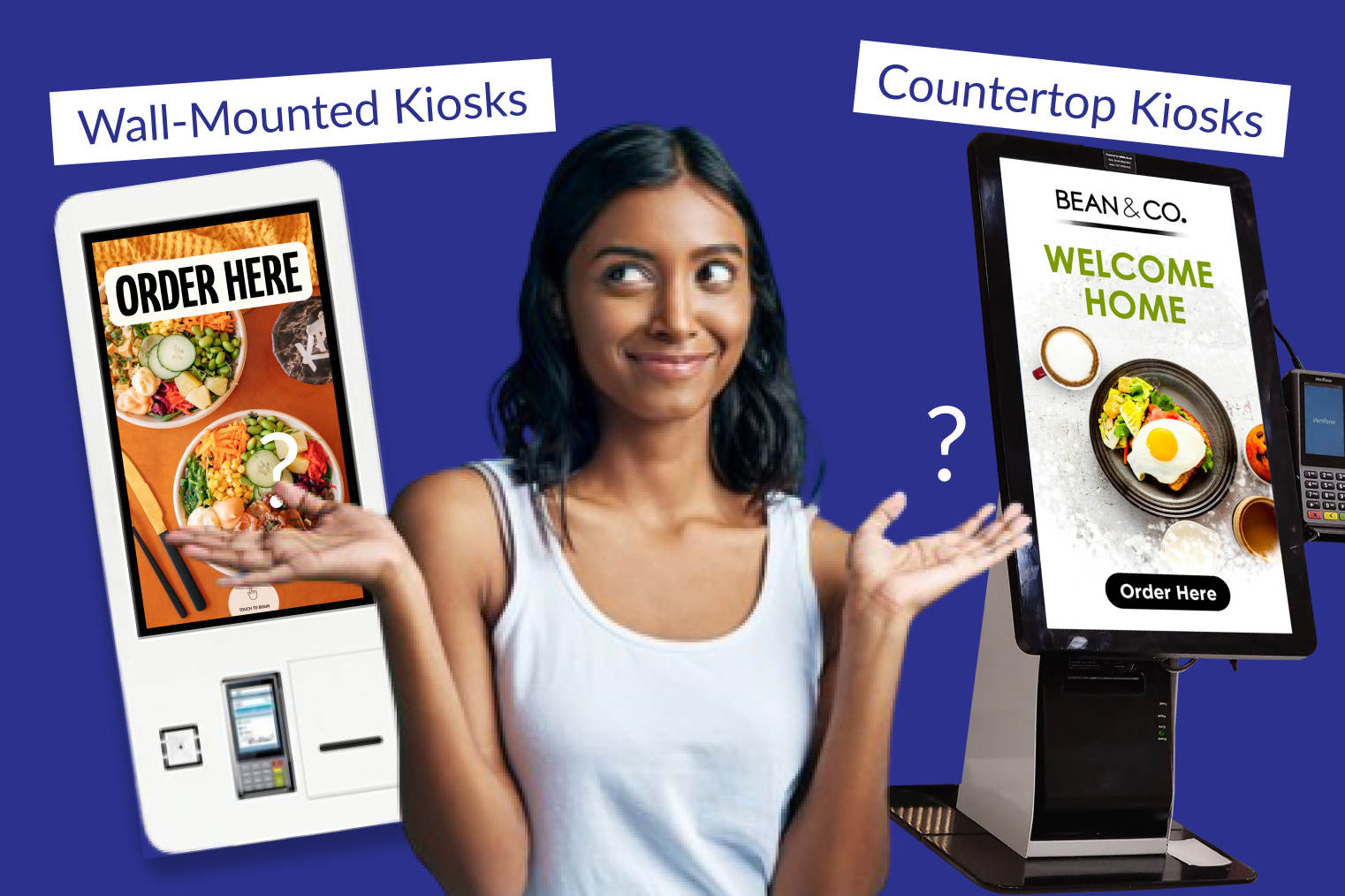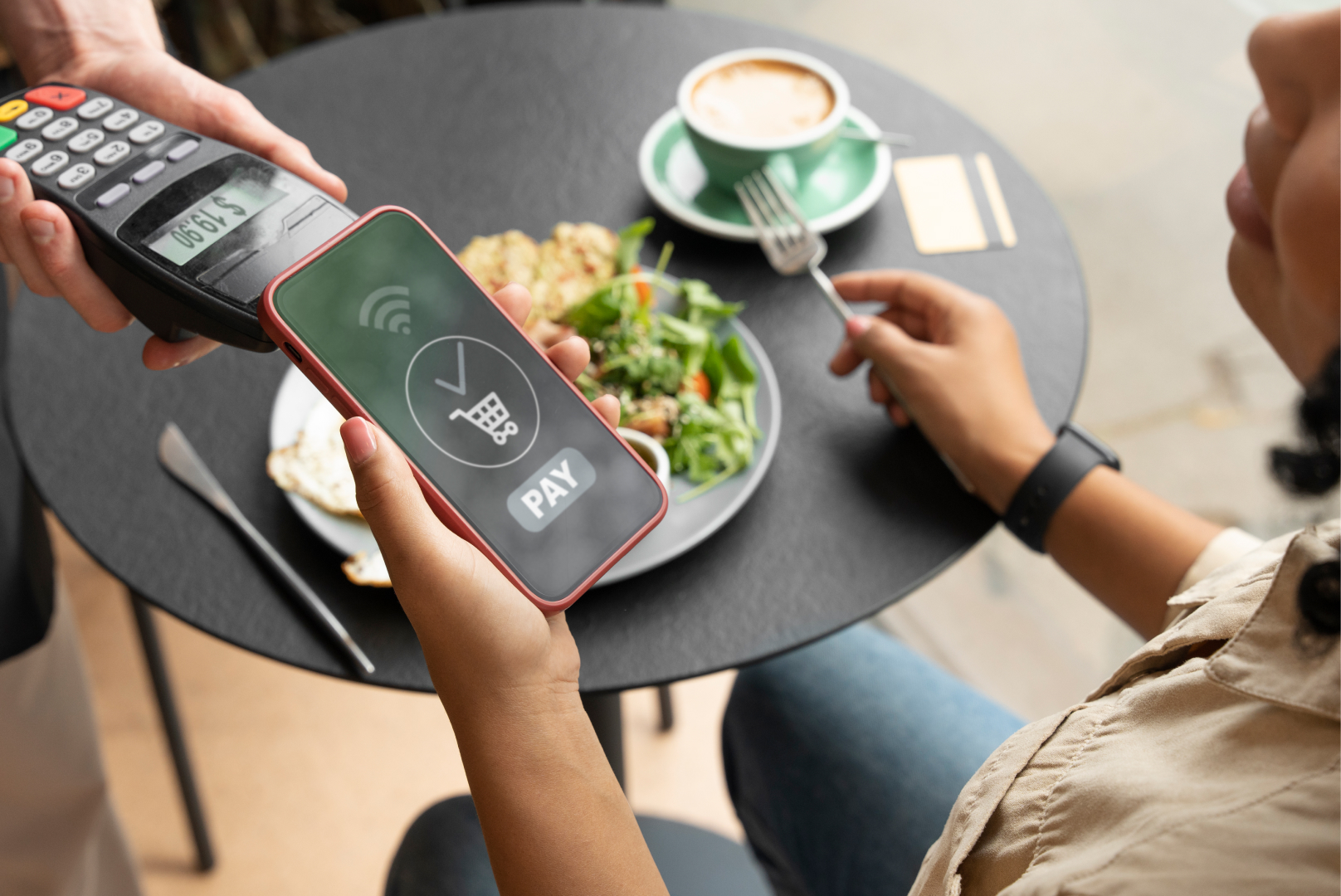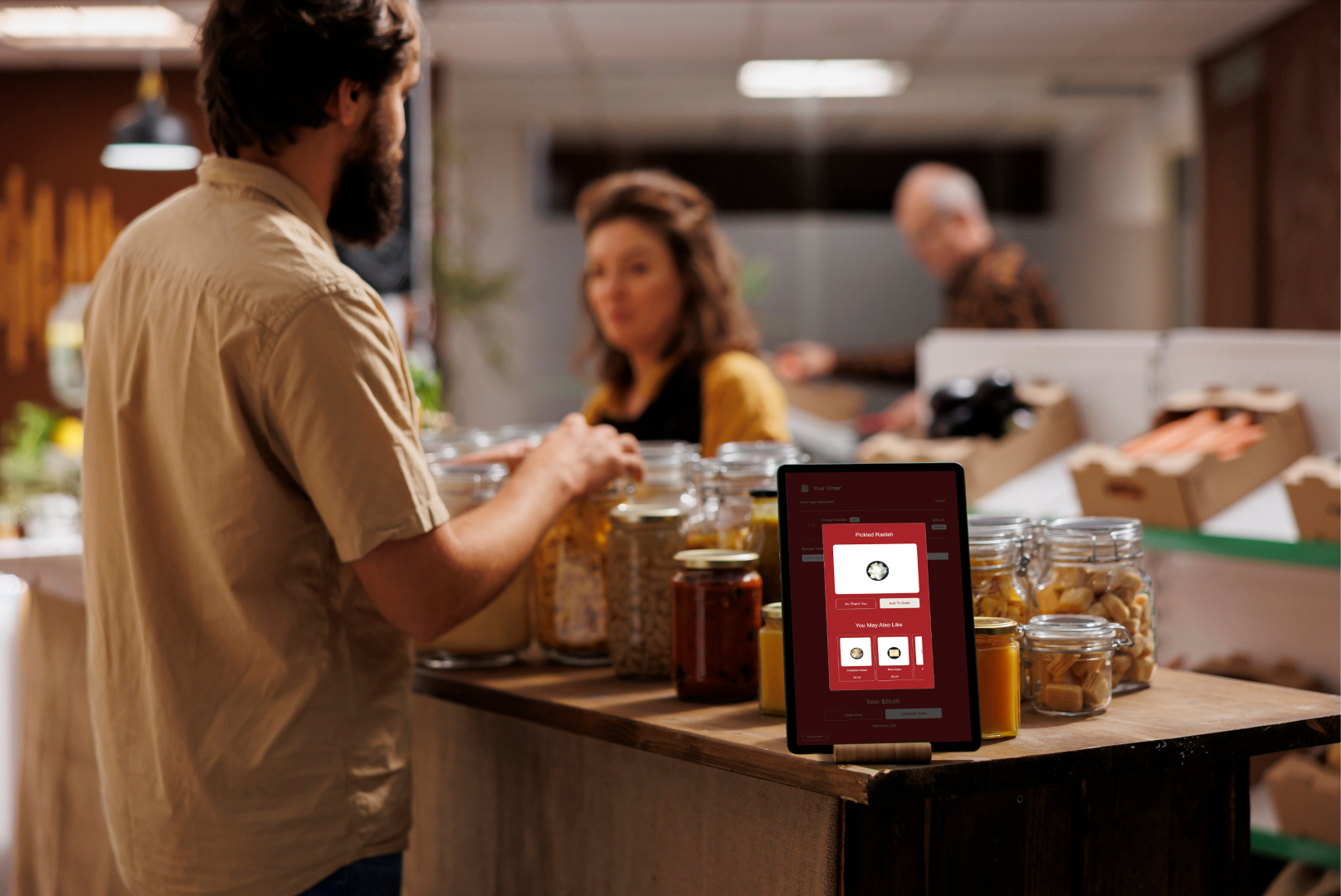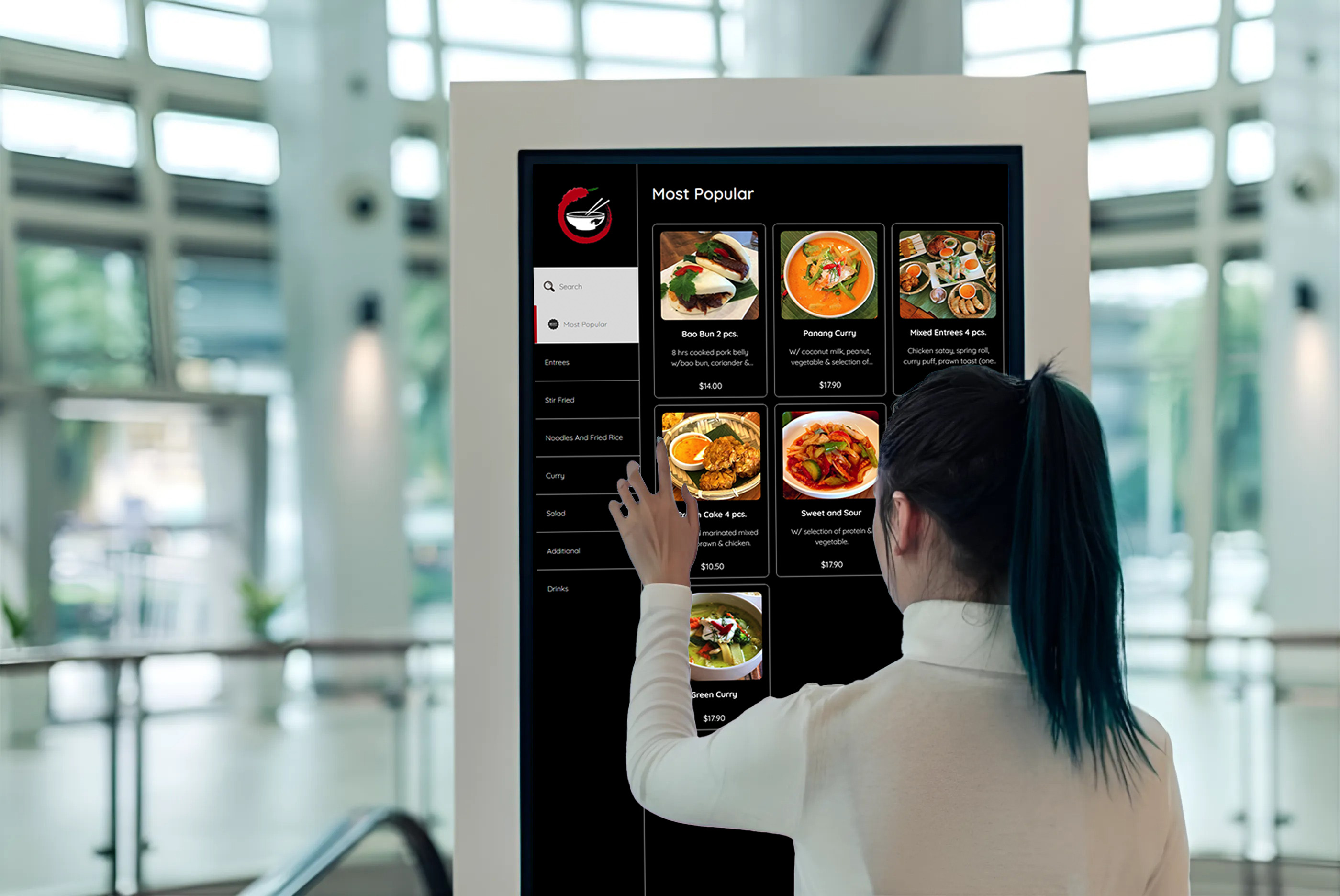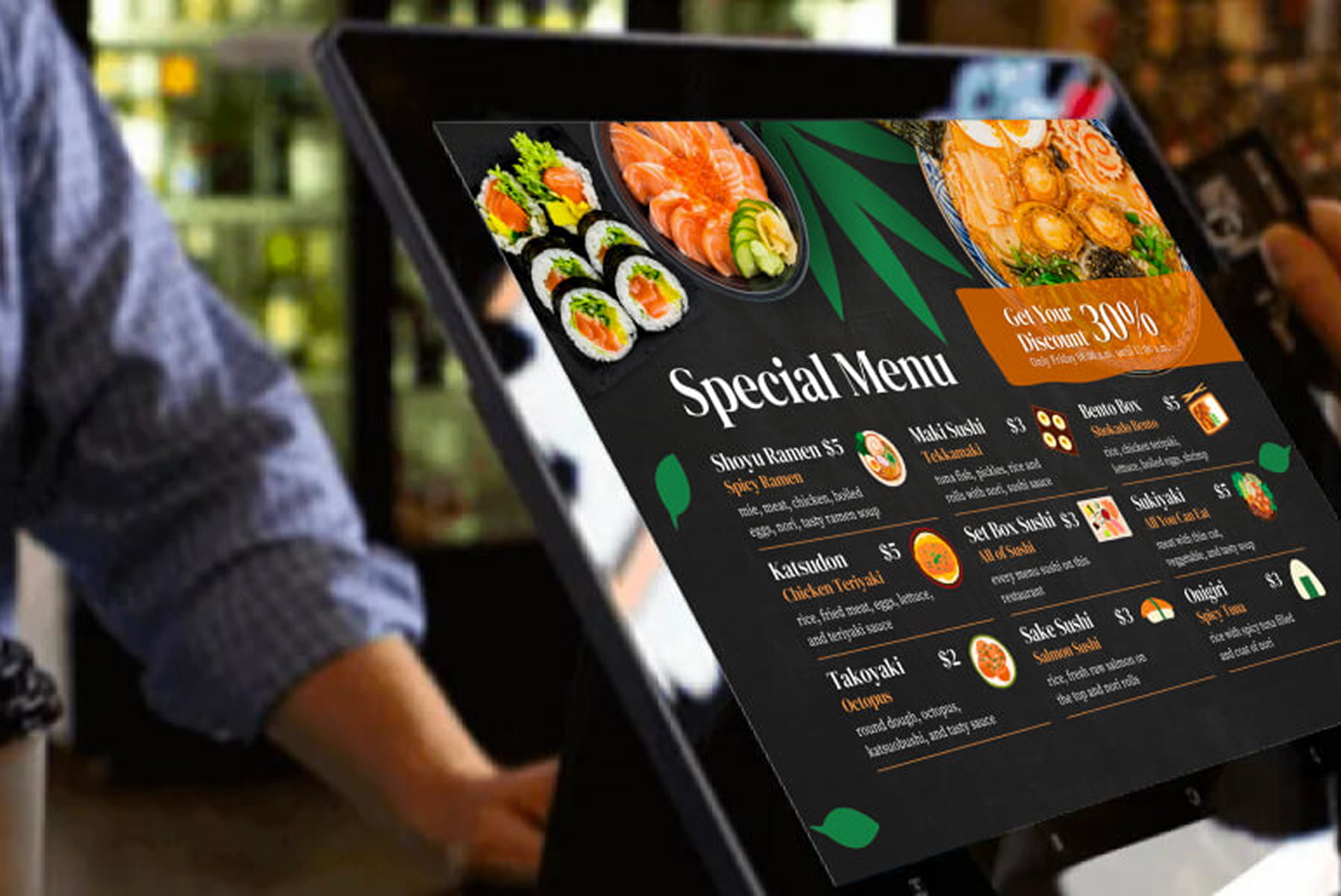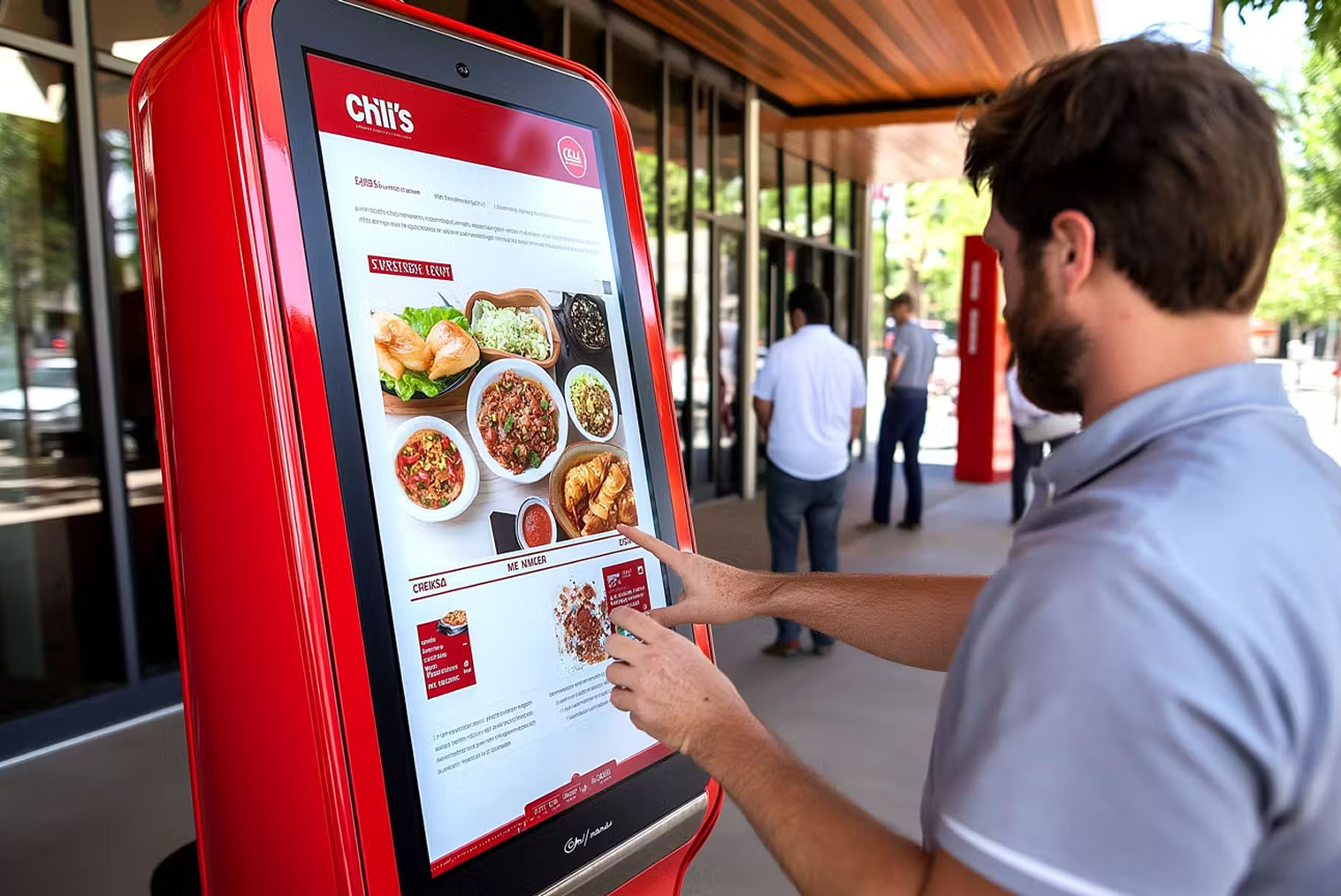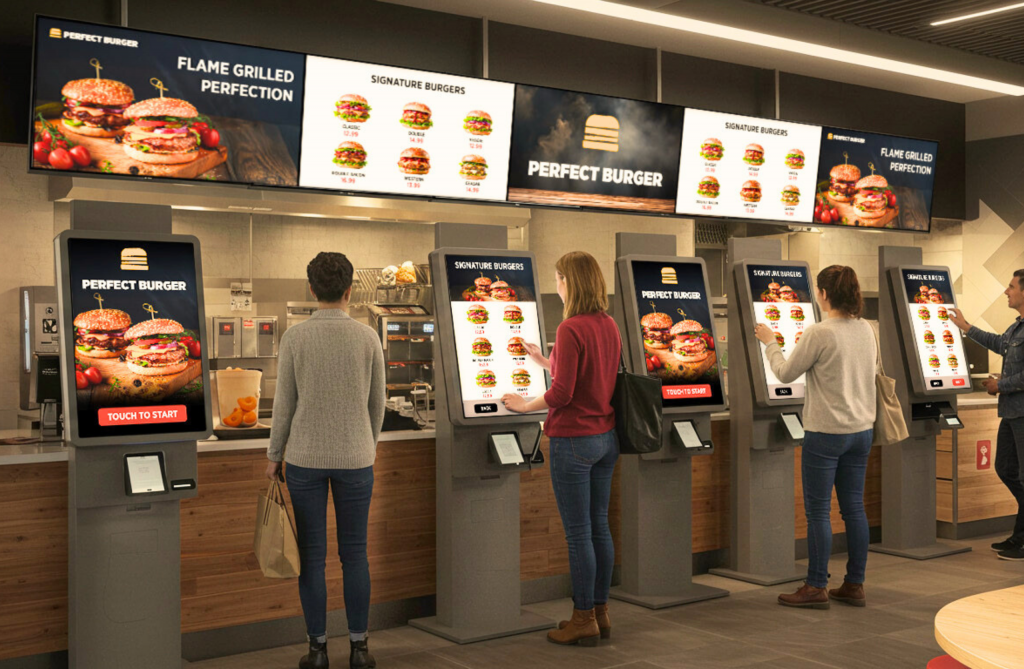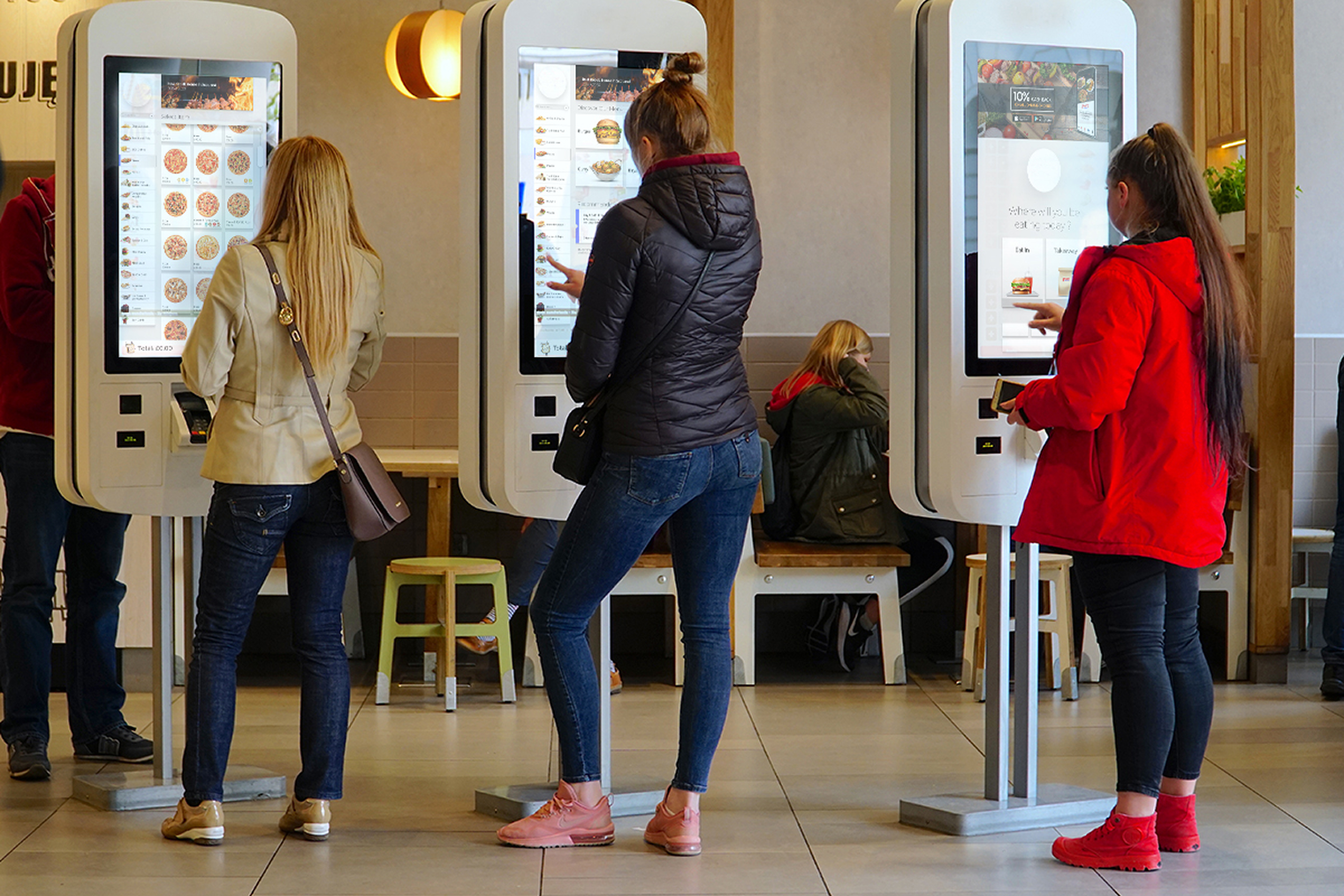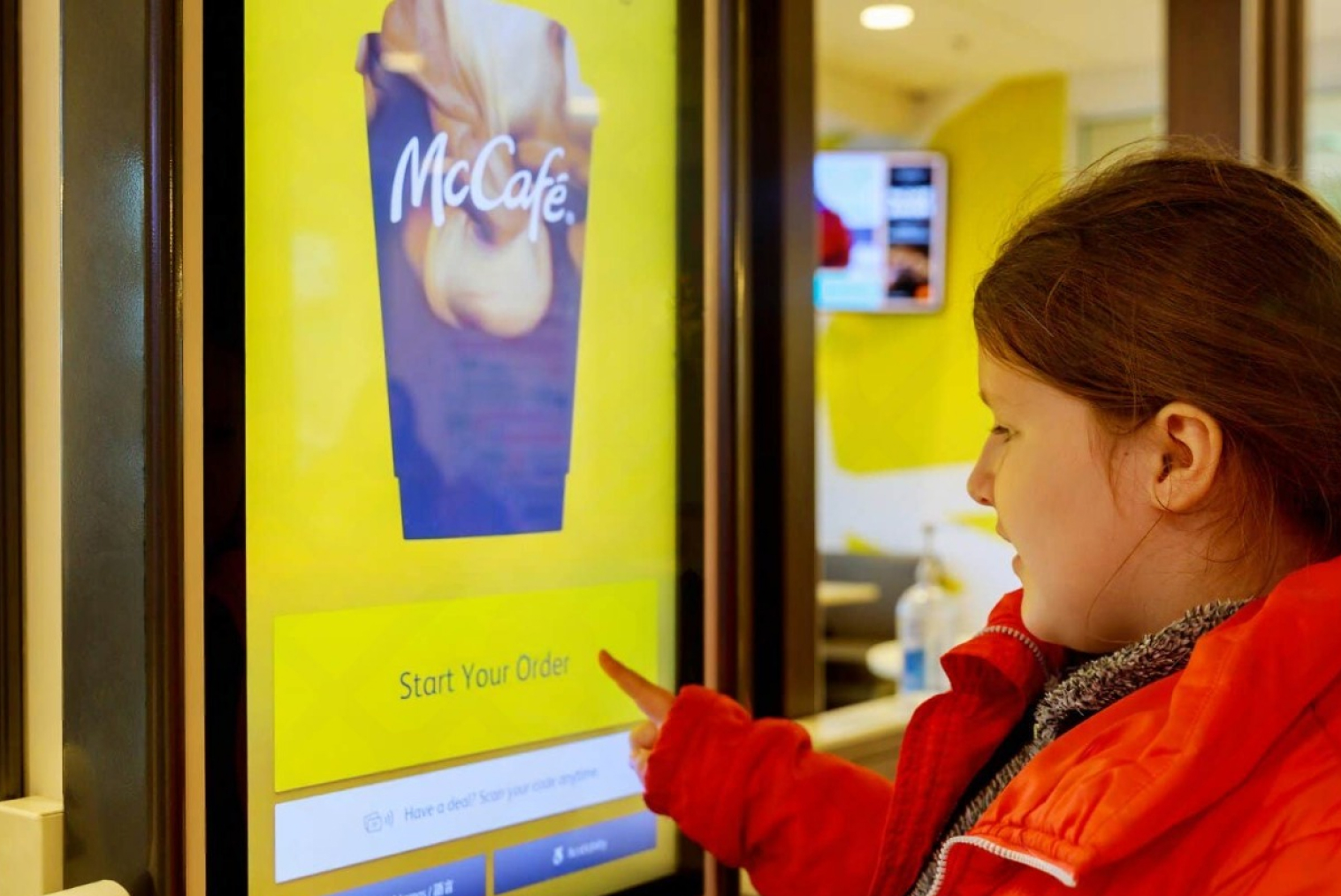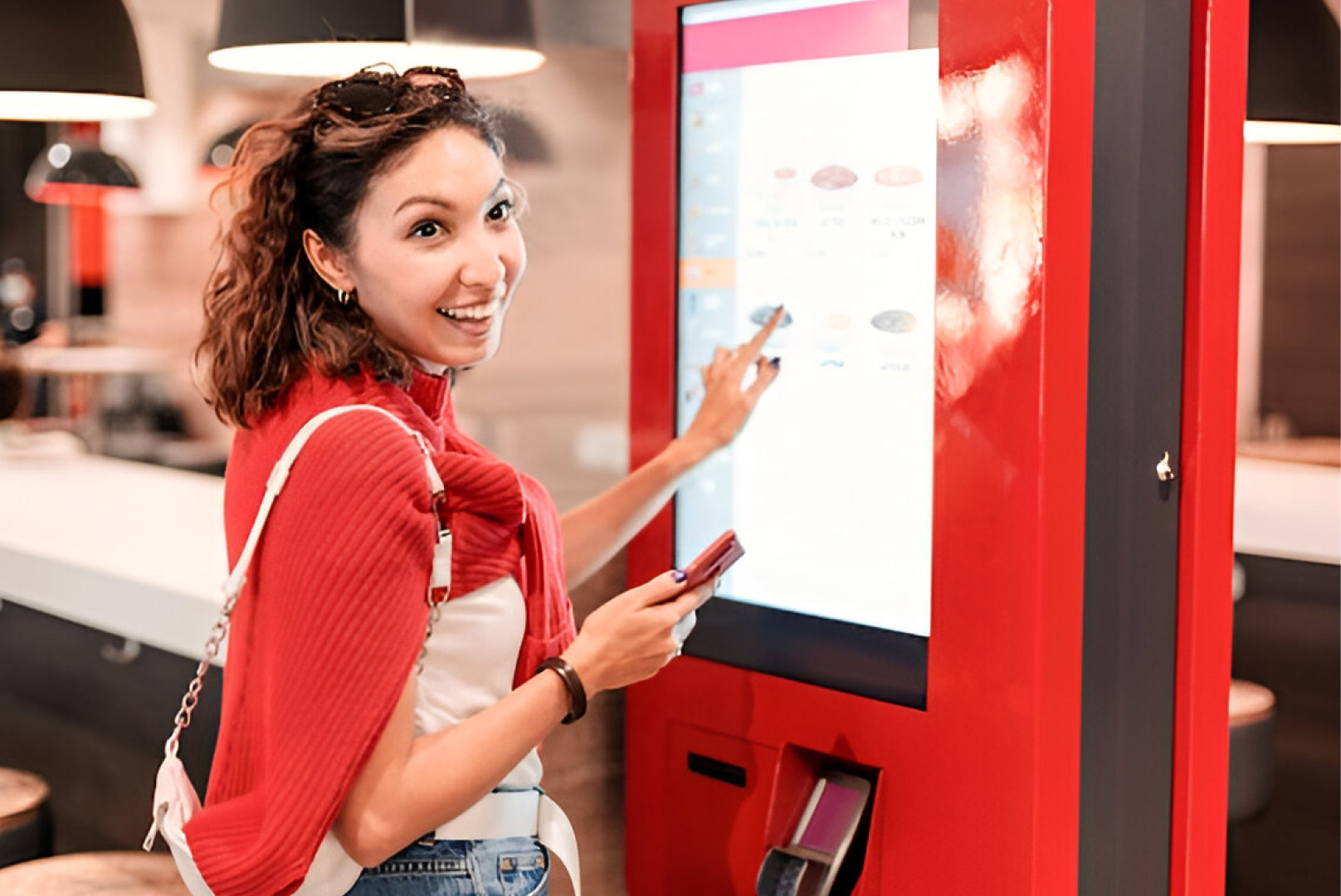In today's busy restaurant and retail spaces, every square inch counts. Whether you're operating a quaint café, a quick-service restaurant, or a retail boutique, selecting the proper kiosk configuration can literally make all the difference in how effectively you serve customers and maximize your floor plan.
When we talk of contemporary self-service solutions, two of the most sought-after options are countertop kiosks and wall-mounted kiosks.
Both are meant to make services more streamlined and improve customer experiences, but they are distinct in how they fit into your environment. In this article, we'll contrast both kiosk options to assist you in determining which one is best for your company.
Understanding the Two Kiosk Types
Let's define each type of kiosk clearly before we talk about the advantages and disadvantages.
What Is a Countertop Kiosk?
A countertop kiosk is a small, independent terminal that rests on present counters or surfaces. It's best for companies that need flexibility in where they place it and a reduced footprint without permanent installation.
These kiosks are often utilised for self-ordering, check-in, or product browsing, and can be simply relocated or repositioned as the store layout changes.
What Is a Wall-Mounted Kiosk?
A wall-mounted kiosk, or also referred to as a wall-mounted touch screen kiosk, is mounted firmly to a wall, providing a neat, space-saving, and up-to-date appearance.
Because it’s mounted, it doesn’t take up counter space, making it perfect for compact or high-traffic areas. Wall-mounted kiosks also work great for establishing permanent self-service stations in lobbies, entrances, or dining rooms.
Key Factors to Consider When Choosing a Wall-Mounted Kiosk
1. Space Layout Efficiency and Use.
Wall-mounted kiosks free up countertops and tables, making them ideal for compact or high-traffic spaces. Their sleek nature means they can be fitted at convenient locations — for example, at entrances or along walls — without blocking traffic.
Countertop kiosks are better if you have large counters or service areas already and would like a kiosk that just fits in with what you have.
Insight: A touch screen kiosk mounted to the wall generally frees up to 30% more space than a freestanding or countertop model, which is why it is a hit in smaller restaurants and stores.
2. Installation and Setup Flexibility
Installation-wise, countertop kiosks possess the advantage of flexibility.
They can be set anywhere with a solid surface and a power source. There is no drilling, wall brackets, or structural changes required. That makes them particularly popular among companies with rented locations where irreversible installations are prohibited.
Wall-mounted kiosks are the opposite; they need to be firmly mounted on the wall and professionally installed to secure stability, cable management, and height alignment.
Nevertheless, when installed, wall-mounted kiosks deliver a slim, permanent appearance that boosts brand presentation and customer convenience.
3. Mobility and Relocation
If your company regularly reconfigures its interior design or is involved in events, countertop kiosks are the obvious choice.
They can be relocated, re-arranged, or even put away when not used — delivering unparalleled versatility.
Wall-mounted kiosks, being stationary installations, are more stable but less mobile. Transferring them would mean uninstalling and remounting, which can take extra time and expense.
4. Durability and Security
When it comes to security, wall-mounted kiosks tend to excel.
Since they are anchored to a wall, it's more difficult for anyone to sabotage or inadvertently destroy them. This makes them suitable for use in public areas like shopping malls, airports, or self-service areas where there are usually unattended kiosks.
Countertop kiosks, though durable, are prone to spills, shifting, or being accidentally dropped based on their positioning. But most contemporary countertop units include anti-slip footings and lockable mounting systems to avoid theft or tilting.
5. Cable Management and Maintenance
Wall-mounted touch screen kiosks tend to give a neater and more streamlined look. Everything can be hidden behind the wall, saving space and keeping it professional-looking.
Countertop kiosks, in turn, can have exposed cables crouching along countertops, though this can be controlled using good cable clips or mounts.
6. Cost and Long-Term Investment
Cost-wise, countertop kiosks are cheaper and less costly to roll out, particularly for small firms or pilot tests.
Wall-mounted kiosks can come with higher upfront installation costs because of mounting needs, but they tend to provide a more premium, permanent, and secure experience which may be an investment worth making for high-traffic spaces.
Which One Should You Use?
Ultimately, the choice between countertop kiosks and wall-mounted kiosks is determined by your business type, availability of space, and service model.
| Business Type |
Best Kiosk Type |
Why |
| Quick-Service Restaurants (QSRs) |
Wall Mounted |
Saves space and handles high foot traffic |
| Cafés or Bakeries |
Countertop |
Easy to move and fits well on existing counters |
| Retail Stores |
Wall Mounted |
Clean, professional presentation and secure installation |
| Pop-Up Shops or Events |
Countertop |
Portable and quick to deploy |
| Corporate Offices / Lobbies |
Wall Mounted |
Permanent, sleek installation |
Whether you opt for a countertop kiosk or a wall-mounted touch screen kiosk, they are both designed to enhance customer ease and operations.
If mobility and flexibility are your goals, countertop kiosks are the ideal fit.
If what you seek is a safe, space-efficient, and permanent setup, wall-mounted kiosks will be your best bet.
In the end, both provide one essential advantage: they allow your company to establish quicker, more contemporary, and more effective customer interactions.
Frequently Asked Questions (FAQs)
Q1. Are wall-mounted kiosks more secure than countertop kiosks?
Yes, wall-mounted kiosks are generally more secure because they are fixed installations. This makes them harder to tamper with or move, which is ideal for high-traffic areas.
Q2. Can countertop kiosks be easily moved or relocated?
Absolutely. Countertop kiosks are designed for mobility and can be easily repositioned, making them great for businesses that frequently update their layout or attend events.
Q3. What factors should I consider when choosing between countertop and wall-mounted kiosks?
Consider your available space, customer flow, installation preferences, and the level of mobility you need. Wall-mounted kiosks save space, while countertop kiosks offer flexibility.
Q4. Are countertop kiosks more flexible for relocation than wall-mounted kiosks?
Yes, countertop kiosks can be easily relocated as they are not fixed installations, unlike wall-mounted kiosks, which require remounting.
Q5. Can wall-mounted kiosks be easily installed in any location?
They can be installed in most locations with a suitable wall and power source. However, professional installation is recommended for proper mounting and cable concealment.
